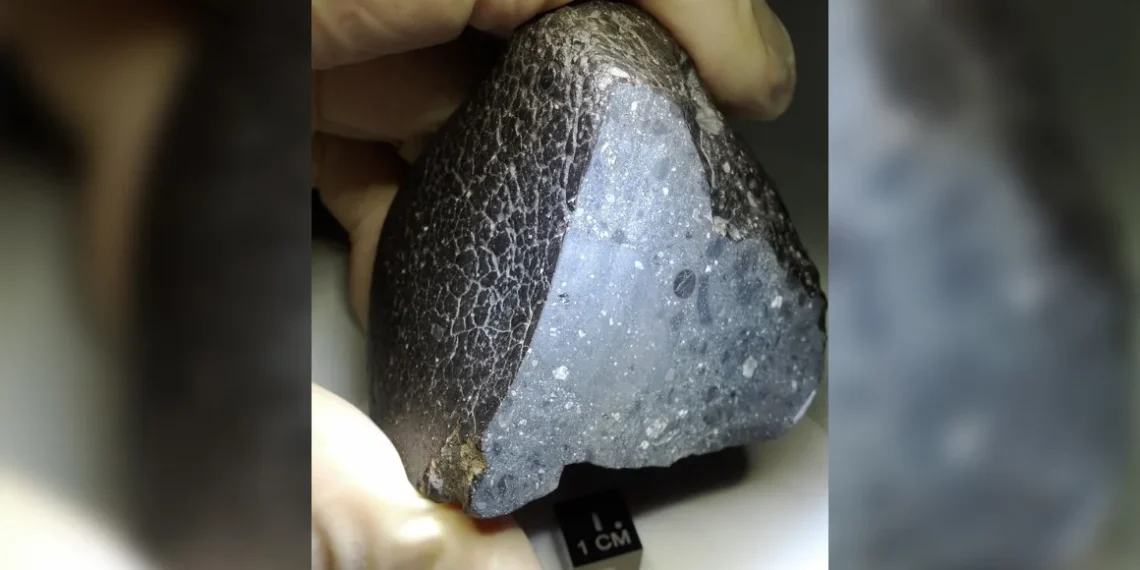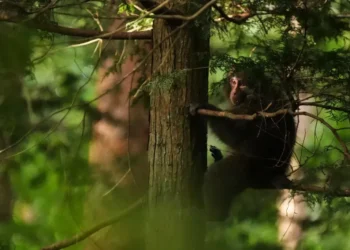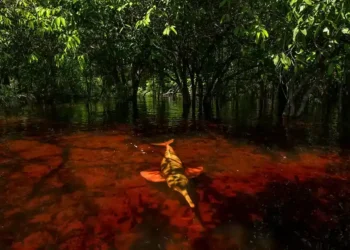Black Beauty Meteorite: Uncovering Mars’ Ancient Water and Potential for Life
In 2011, a unique Martian meteorite known as “Black Beauty” was discovered in the Sahara Desert. This extraordinary space rock, officially named NWA 7034, has now unveiled one of its most groundbreaking secrets: evidence of ancient water on Mars, dating back 4.45 billion years. The discovery, centered on a zircon grain within the meteorite, suggests that Mars’ ancient environment may have supported life, similar to early Earth.
A Window Into Mars’ Watery Past
The zircon grain found in Black Beauty offers the oldest direct evidence of water on Mars, revealing traces of hot water that might have created habitable environments like hot springs. Such conditions are closely linked to the emergence of life on Earth, opening new possibilities for understanding Mars’ potential habitability in its ancient past.
Jack Gillespie, lead author of the study published in Science Advances, stated, “Our data suggests the presence of water in the crust of Mars at a comparable time to the earliest evidence for water on Earth’s surface, around 4.4 billion years ago.” This discovery highlights Mars as a planet that once had warm, wet environments capable of supporting life.
The Significance of Black Beauty
Black Beauty, ejected from Mars 5 to 10 million years ago by a cosmic impact, has been a critical source of information about the red planet. The meteorite contains hundreds of rock and mineral fragments, each representing different aspects of Mars’ 4.5-billion-year history. Among these fragments are some of the oldest known pieces of Martian crust, including ancient zircons that serve as “time capsules” for understanding the planet’s evolution.
Dr. Aaron Cavosie, study coauthor and planetary scientist at Curtin University, explained, “The Black Beauty meteorite is the only source of pieces for the geological puzzle of pre-Noachian Mars.” This period, dating from 4.5 to 4.1 billion years ago, is critical for understanding Mars’ early history and the potential for life.
Unlocking Secrets Through Zircon
Zircon, a durable mineral used in various Earth-based applications like jewelry and ceramics, plays a pivotal role in studying Mars’ past. The zircon in Black Beauty remained unaltered during its fiery journey to Earth, providing pristine insights. By analyzing the uranium-to-lead ratio within the zircon grain, scientists determined its age and discovered unusual amounts of iron, sodium, and aluminum — elements typically associated with water-rich environments.
“We could tell by the patterns of how these elements are found inside the zircon that they were incorporated as the grain grew, like layers in an onion,” Cavosie noted. These findings suggest that hydrothermal systems, powered by volcanic activity, may have existed on Mars 4.45 billion years ago, creating liquid water environments beneath the surface.
Implications for Life on Mars
Hydrothermal systems on Earth, such as hot springs and deep-sea vents, are known to support diverse ecosystems and are believed to have fostered early life. If similar systems existed on ancient Mars, they might have created habitats capable of supporting life. “Our new study shows that the crust of Mars was warm and wet in the pre-Noachian period, meaning that habitable environments may have existed at that time,” Cavosie said.
Looking Forward: Future Exploration
While Black Beauty has provided remarkable insights, scientists are eager to gather more data directly from Mars. The Perseverance rover, currently exploring Jezero Crater, is collecting rock samples that could offer further evidence of ancient hydrothermal activity and microbial life. These samples, once returned to Earth, will enable even more detailed analysis than what meteorites like Black Beauty can provide.
Briony Horgan, planetary scientist and co-investigator on the Perseverance mission, emphasized the importance of this research: “As much as the meteorites can tell us, we can do even better with a carefully selected and intact rock sample from a known location on Mars with good geologic context.”
A New Chapter in Mars Exploration
Black Beauty’s secrets continue to fuel scientific curiosity and pave the way for future exploration. The evidence of ancient water and hydrothermal systems provides a strong foundation for the hypothesis that Mars once had conditions suitable for life. With ongoing missions and advanced technology, the red planet’s history is slowly being pieced together, offering a glimpse into its potential to harbor life billions of years ago.
This article was rewritten by JournosNews.com based on verified reporting from trusted sources. The content has been independently reviewed, fact-checked, and edited for accuracy, neutrality, tone, and global readability in accordance with Google News and AdSense standards.
All opinions, quotes, or statements from contributors, experts, or sourced organizations do not necessarily reflect the views of JournosNews.com. JournosNews.com maintains full editorial independence from any external funders, sponsors, or organizations.
Stay informed with JournosNews.com — your trusted source for verified global reporting and in-depth analysis. Follow us on Google News, BlueSky, and X for real-time updates.













